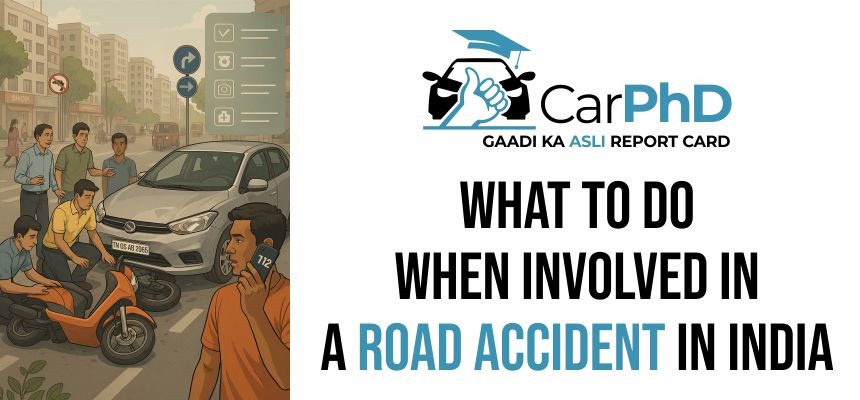Being involved in a road accident can be a stressful and confusing experience, whether you’re a driver, passenger, or pedestrian. In the chaos that follows, it’s important to stay calm, act responsibly, and understand your legal and moral obligations. Here’s a step-by-step guide on what to do if you’re involved in a road accident in India:
⸻
1. Ensure Safety First
Your immediate priority should be safety—yours, that of others involved, and nearby road users.
• Move to a safe spot if possible without fleeing the scene.
• Switch on hazard lights.
• If someone is injured, do not delay medical assistance.
• Call for help — dial 108 (ambulance) or 100 (police).
Note: Good Samaritans helping accident victims are protected by law and cannot be harassed by police or hospital staff.
⸻
2. Do Not Flee the Scene
Leaving the accident site can be considered a punishable offense, especially if someone is injured or dead. Stay put, cooperate with authorities, and assist the injured if needed.
⸻
3. Call the Police and File an FIR
If the accident involves:
• Injury or death
• Damage to property
• A hit-and-run
• Suspicion of drunk driving
Then it’s mandatory to report the accident to the police immediately. File a First Information Report (FIR) at the nearest police station or with the traffic police. This is crucial for insurance claims and legal proceedings.
⸻
4. Document the Scene
Take photos and videos of:
• The vehicles involved (including number plates)
• Damages to property or persons
• Road conditions, traffic signs, or other relevant surroundings
• Injuries, if any (with consent)
Also, gather:
• Contact details of witnesses
• Driver’s license, registration, and insurance details of the other party
⸻
5. Exchange Information
Talk to the other party involved (driver or owner), but remain calm and respectful. Exchange:
• Names
• Contact numbers
• Vehicle registration numbers
• Insurance policy details
Avoid arguments or admitting fault at this stage—let the authorities determine responsibility.
⸻
6. Seek Medical Attention
Even if injuries appear minor, it’s wise to get a medical check-up. Some internal injuries don’t manifest symptoms immediately. Keep medical records safe, especially if you plan to file a claim.
⸻
7. Inform Your Insurance Provider
Report the accident to your car/bike insurance provider at the earliest. Most insurers have a 24/7 helpline. Provide:
• Photos and videos from the scene
• FIR copy (if applicable)
• Hospital bills or medical certificates (if injured)
This will help initiate the claim process.
⸻
8. Legal Rights and Responsibilities
You are entitled to:
• File for compensation under the Motor Vehicles Act
• Engage a lawyer if needed
• Approach the Motor Accident Claims Tribunal (MACT) if compensation is denied
If you are wrongly accused, consult a lawyer and retain all documentation.
⸻
9. Be Aware of Hit-and-Run Laws
If the accident involves a hit-and-run, try to note:
• Vehicle type and color
• Registration number (even partial helps)
• Direction of escape
• Time and place
Give this information to the police immediately.
⸻
10. Mental and Emotional Health
Accidents can be traumatic. Don’t hesitate to seek emotional support or counseling, especially if you or someone you care about has suffered serious injury or loss.
⸻
Final Thoughts
Accidents happen, but knowing what to do can protect you legally, help save lives, and ease the stress of the situation. Whether you’re a victim or a witness, acting responsibly and promptly can make a significant difference. Always drive cautiously, respect traffic laws, and remember—on the road, everyone’s life matters.
⸻
Let me know if you’d like a downloadable checklist or version tailored for a specific audience (drivers, two-wheeler riders, etc.).


